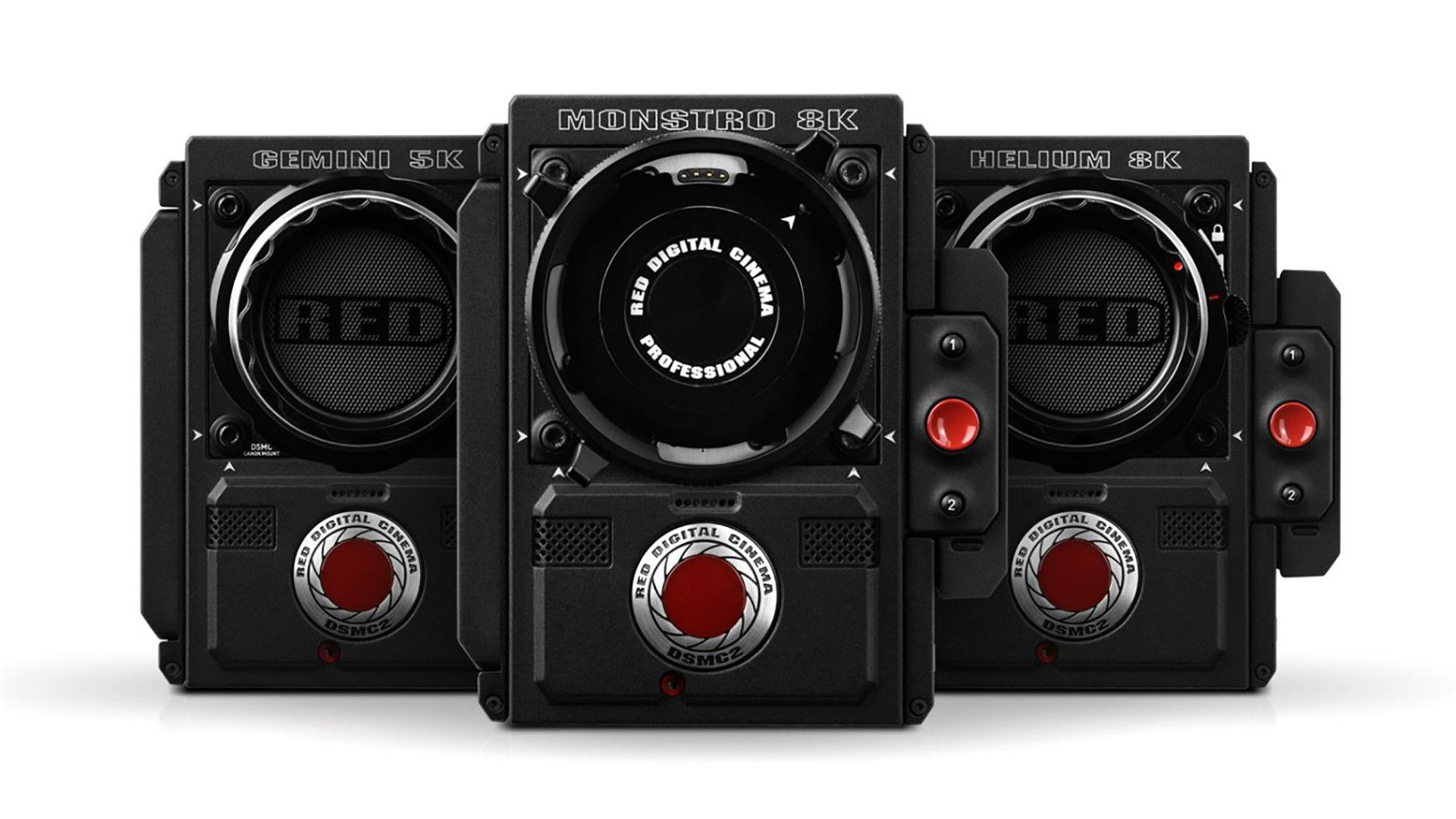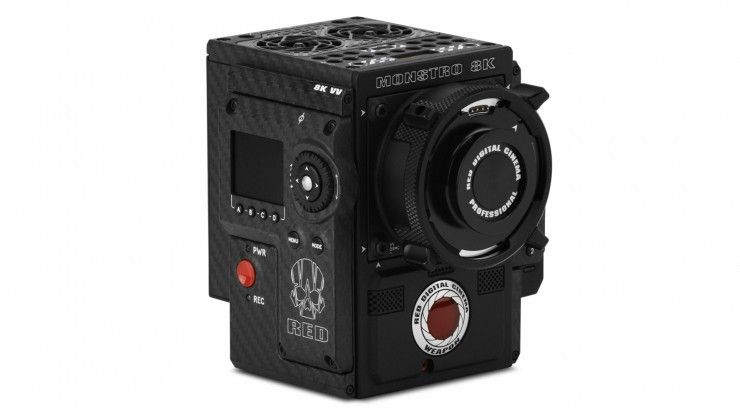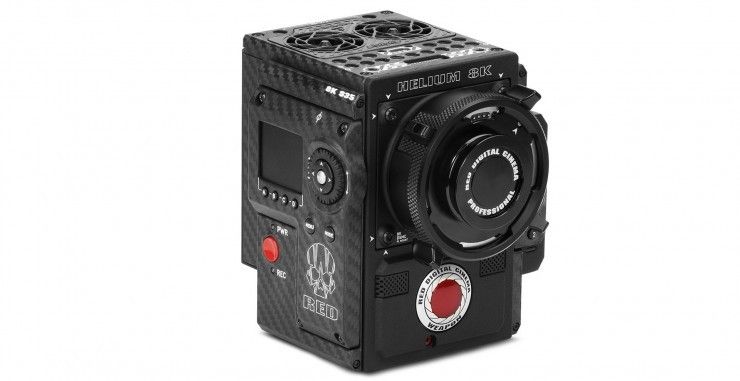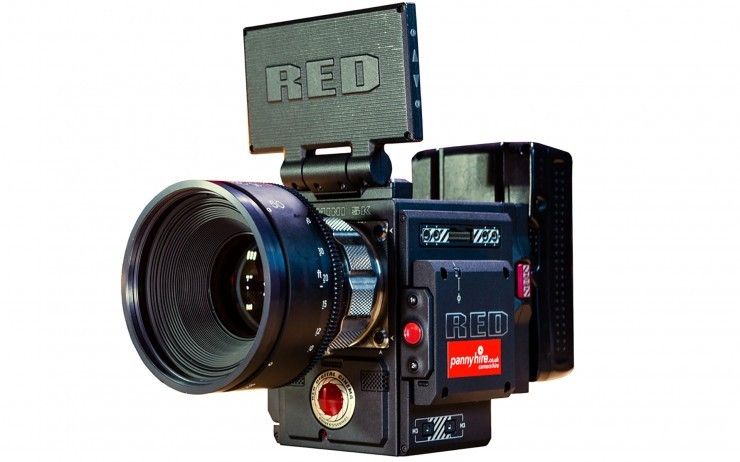
Let’s look at RED’s current DSMC2 lineup to find which (if any) is the right option for your film or video project.
RED’s digital cinema cameras seem to have a polarized effect on people in the film and video industry. Groundbreaking when first launched almost 20 years ago. Like founder Jim Jannard’s previous company, Oakley, RED Digital Cinema has been about disruption, brand-heavy aesthetics, and opening up a new, budding technology to the masses.
In a recent event hosted by RED at the Austin Film Society, was able to get a hands-on look on RED’s current DSMC2 lineup and get some insights into their top-of-the-line digital cinema camera offerings. While there’s no reason to suggest going out and buying a RED is a necessity for anyone, if you are looking for a certain value camera that can shoot 8K and utilize REDCODE RAW recording, here are the best current options on the market.
The Top of the Line: RED MONSTRO 8K VV

While we didn’t get to go hands-on with the RED MONSTRO 8K in our workshop, RED did show off the impressive list of first run features and series which have been shot on the MONSTRO 8K for Netflix and the like. With a similar sized sensor as the HELIUM (which we did get to try out - more on it below), the MONSTRO boasts up to 17 times more resolution than HD, and over four times than 4K.
-
35.4 Megapixel CMOS Sensor
-
40.96 mm x 21.60 mm (Diag: 46.31 mm)
-
60 fps at 8K Full Format (8192 × 4320)
-
75 fps at 8K 2.4:1 (8192 × 3456)
-
Price: $54,000
The 8K Offering: RED HELIUM 8K S35

-
35.4 Megapixel CMOS Sensor
-
29.90 mm x 15.77 mm (Diag: 33.80 mm)
-
60 fps at 8K Full Format (8192 × 4320)
-
75 fps at 8K 2.4:1 (8192 × 3456)
-
Price: $24,500
The Flexible Option: RED GEMINI 5K S35

-
15.4 Megapixel Dual Sensitivity CMOS Sensor
-
30.72 mm x 18 mm (Diagonal: 35.61 mm)
-
96 fps at 5K Full Format (5120 × 2700)
-
75 fps at 5K Full Height 1.7:1 (5120 × 3000)
-
Price: $19,500
BONUS: RED Hydrogen One

- OS: Android 8.1 (Oreo)
- 5.7 inch 3D Display LTPS-TFT
- 6 GB RAM
- Rear Camera: 12.3 Megapixel, 4056x3040, LED Flash
- Front Cameras: 8.3 Megapixel, 3840x2160
- Video: 4K video recording
- Price: $1,295
Your Comment
7 Comments
RED's been around for almost 20 years? That's... not possible. Maybe 12 years.
November 19, 2018 at 1:43PM, Edited November 19, 1:43PM
I noticed that as well. But that's not the only mistake in the article. The 8K Monstro does not share a sensor with the Helium. They might have the same resolution, but are two completely different sizes, ergo they are not the same sensor or even sensor architecture.
But wait, that's not all! In the Gemeni section, he equates "low distortion" and low light. Ummm, did you mean "noise?"
Finally, the headline has nothing to do with the content. Writing a few vague specs and a couple sentences on each camera doesn't provide very much insight into helping someone decide "which RED cinema camera is right for you?" This site has had some generally useful articles, but this one is all just filler.
November 19, 2018 at 10:26PM
I have to agree with Patrick and Kyle,
Did someone not proof this article?
I was expecting an article with really good talking points about which RED is right for you, the real question is what are you trying to do and is that camera RIGHT for you. . . . . .
-.- but GEMINI is for me :P
November 20, 2018 at 6:39AM
Classic Jourdan Aldridge article: confusing, inaccurate, pointless. Can someone please check his homework from now on? Between this and the bonkers “mirrorless vs dlsr” article he wrote, NFS is on a quick ride to obscurity.
November 20, 2018 at 1:46PM
Monstro IS A SENSOR. Helium IS A SEPARATE SENSOR. I will admit Red hasn't made it easy in the past but this is as easy as it has ever been to understand the Red camera and sensor lineup.
This article is full of misinformation. It doesn't do what it promises to do in the title. It's too bad this article sucks, I was really curious what writers on this site thought about why filmmakers should choose certain Red cameras.
This article is bad.
November 21, 2018 at 10:06AM, Edited November 21, 10:06AM
Do you still have to buy proprietary RED media and overpriced accessories to get XLR inputs?
What about a viewfinder, is that included or do you have to buy one separately?
November 21, 2018 at 3:09PM, Edited November 21, 3:09PM
Forgot to mention the M42 lens mount.
November 23, 2018 at 1:18PM